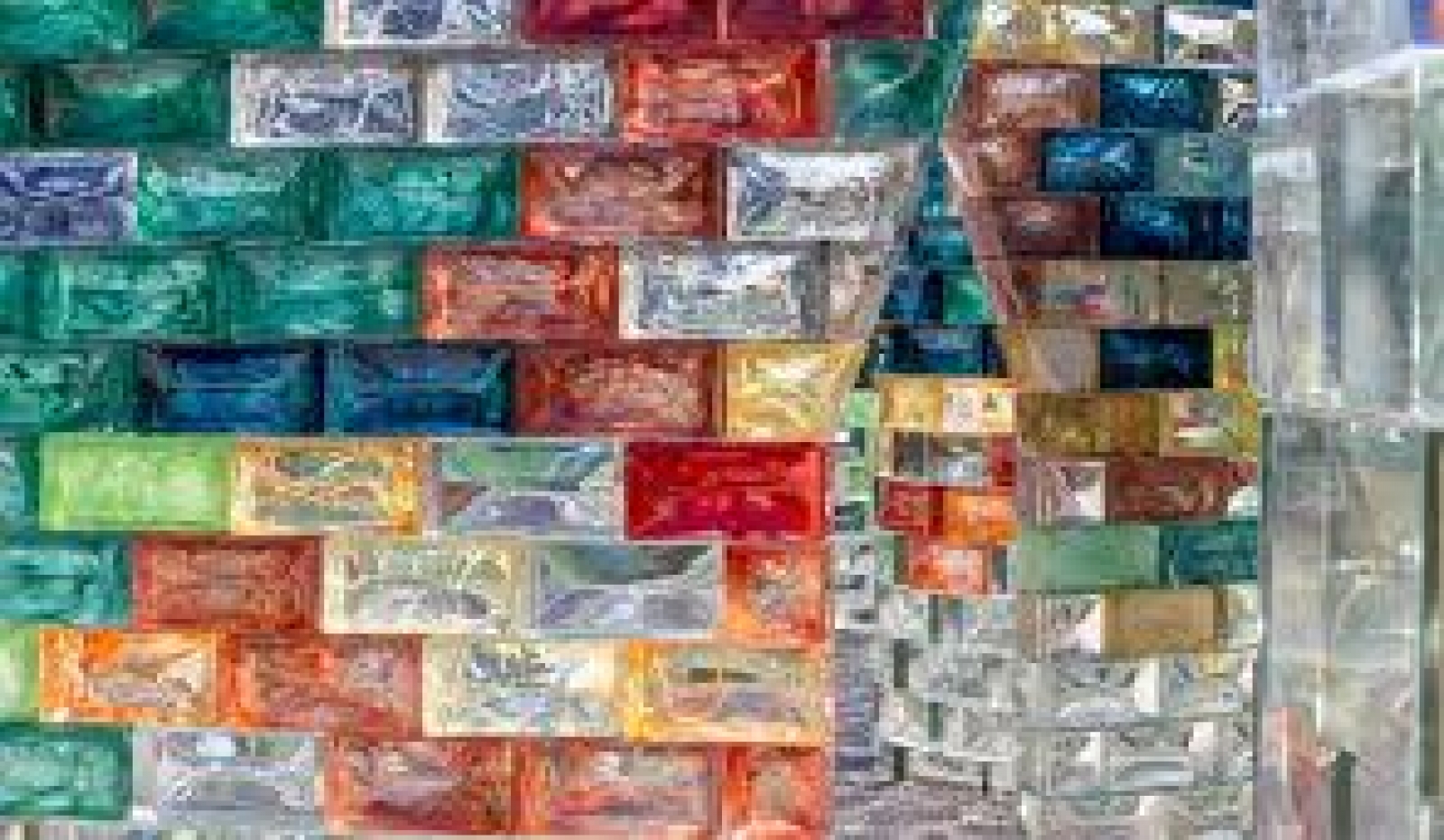Qwalala by Pae White
Pae White, “Qwalala”, LE STANZE DEL VETRO, Venezia 2017, Ph. Enrico Fiorese
On May 12, 2017, on the occasion of the 57th International Art Exhibition – La Biennale di Venezia, Qwalala, a monumental new sculpture by American artist Pae White, will open to the public on the Island of San Giorgio Maggiore in Venice.
Qwalala is the second outdoor installation (following Hiroshi Sugimoto’s Glass Tea House Mondrian) to be commissioned by LE STANZE DEL VETRO. The work by American artist Pae White consists of a curving wall made of 3,000 solid glass-bricks, each hand-cast in the Veneto region. At 75 metres long and 2.4 metres high, it occupies the entire area opposite LE STANZE DEL VETRO. The title of the piece, Qwalala, is a Native American Pomo word and references the meandering flow of the Gualala river in Northern California, which the work echoes in both its structure and layout.
Approximately half of the bricks are made of clear glass whereas the other 1,500 bricks span a palette of 26 colours, in a technique where each brick contains a “storm”-like effect of swirling colour. From afar these bricks form an abstract, painterly pattern, which reveal a world of detail upon closer inspection. The layout and colour combinations were chosen by the artist from thousands of random, computer generated alternatives using software developed specifically for the project. Seemingly simple in its form, the wall explores the limits of glass as a building material and bears witness to Pae White’s interest in combining common materials with cutting-edge technology, traditional craftsmanship with advanced engineering, and employing industrial manufacturing to challenge the limits of each of these. The result can be understood as both a sculpture that is evocative of architecture and architecture that is evocative of sculpture.
The project will be accompanied by a book published by Verlag der Buchhandlung Walther Koenig.

